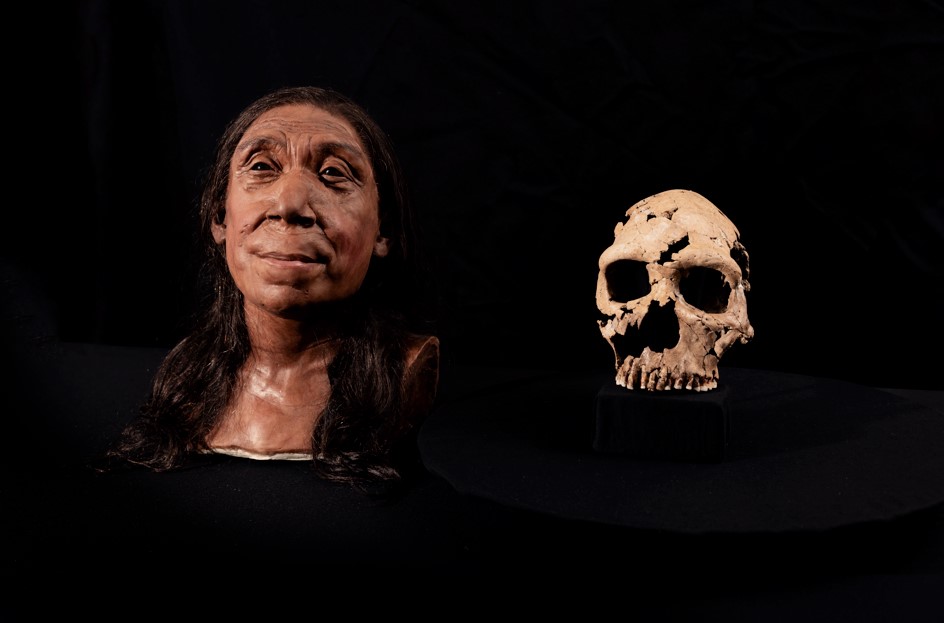The most complete and well-preserved Neanderthal skeleton discovered since the turn of the millennium has been used to reconstruct the face of its owner – a female member of the extinct human lineage who lived around 75,000 years ago. Found within the iconic yet controversial Shanidar Cave – where Neanderthals repeatedly buried their dead, possibly on beds of flowers – the skeleton features in a new Netflix documentary entitled Secrets of the Neanderthals.
First discovered in the 1950s in Iraqi Kurdistan, Shanidar Cave has yielded some of the most remarkable Neanderthal finds in the entire archaeological record, including the remains of at least 10 separate individuals. Of particular interest are the funerary practices evidenced within the cave, which have contributed massively to our understanding of Neanderthal cognition and transformed the popular perception of this ancient species from primitive brutes to complex thinkers.
For instance, at least five individuals appear to have been interred in a cluster behind an enormous rock, suggesting the spot held special significance and was therefore chosen as a burial ground by multiple successive generations. In the 1960s, clumps of pollen were discovered around one of these skeletons, giving rise to the idea that Neanderthals may have laid floral tributes to the deceased.
“We can see that Neanderthals are coming back to one particular spot to bury their dead,” said Dr Emma Pomeroy from the University of Cambridge in a statement. “This could be decades or even thousands of years apart. Is it just a coincidence, or is it intentional, and if so what brings them back?”
The recently discovered female has been labeled Shanidar Z and was located within the cluster buried behind the monolith, her skull crushed beneath a rock. Analysis of the remaining teeth indicated that she died in her mid-40s and may therefore have been respected and revered due to her advanced age.
After excavating the body, researchers painstakingly removed, scanned and reassembled the flattened skull in order to create a model of the ancient woman’s face. According to Pomeroy, this highly delicate work required immense care since the bone was “similar in consistency to a biscuit dunked in tea,” its softness making it difficult to handle without damaging it.
The recreated head and reconstructed skull of Shanidar Z.
Image credit: BBC Studios/Jamie Simonds
“The skulls of Neanderthals and humans look very different,” she says. “Neanderthal skulls have huge brow ridges and lack chins, with a projecting midface that results in more prominent noses. But the recreated face suggests those differences were not so stark in life.”
“It’s perhaps easier to see how interbreeding occurred between our species, to the extent that almost everyone alive today still has Neanderthal DNA,” she adds. Indeed, recent research has helped to reveal the many similarities between Homo sapiens and Neanderthals, highlighting how the latter mastered fire, cooked food, and created art.
Returning to Shanidar cave, the notion of the Neanderthal “flower burial” has recently been challenged by evidence suggesting that the pollen was actually introduced to the cave by nesting bees. Nonetheless, the remains found at the site paint the ancient hominids as empathetic and emotionally evolved creatures, with one disabled individual showing signs of having received ongoing care throughout his life.
“Neanderthals have had a bad press ever since the first ones were found over 150 years ago,” said Professor Graeme Barker, leader of the excavation. “Our discoveries show that the Shanidar Neanderthals may have been thinking about death and its aftermath in ways not so very different from their closest evolutionary cousins – ourselves.”
Source Link: Best-Preserved Neanderthal Skeleton In Over 25 Years Found In “Flower Funeral” Cave
